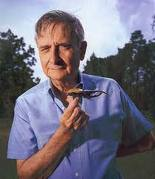 Every time I buy socks I think of the Axiom of Choice.
Every time I buy socks I think of the Axiom of Choice.
About a century ago, mathematicians were arguing about exactly which basic axioms, or assumptions, were needed in order to justify all of our mathematics. Because of the personalities involved and the nature of mathematical discourse at the time, Set Theory was the starting point, and one of the axioms under consideration was the Axiom of Choice.
Deciding on axioms is tough business: an axiom has to be powerful enough to do something but obvious enough for people to accept it as true without evidence. But deciding on axioms has to be done: before we can prove anything, we need to assume something is true.
The Axiom of Choice essentially says that if you have an infinite number of sets, you can form a new set by choosing an arbitrary element from each of those sets. It seems sensible enough, but fierce mathematical debate raged for years about whether this was obvious enough to be true. Some mathematicians still don’t accept this principle.
So why would someone object to this sensible-enough idea? That’s where shoes and socks come in.
Suppose you had infinitely many pairs of shoes. There’s a straightforward way to define a new set that contains one shoe from each pair: choose every left shoe. This explicit rule make its clear how to construct this new set, and so forming this new infinite set seem reasonable.
But imagine you had infinitely many pairs of socks. Since the socks are identical, you can’t give a specific rule that says “for each of the pair of socks, give me that one”. You need to believe in the Axiom of Choice in order to believe that such a set, one containing one sock from each pair of socks, can really be formed without giving an explicit rule.
As it turns out, deciding to believe in this set of socks has substantial consequences for what you can prove in mathematics. So there’s something to think about the next time you are sock shopping!
Related Posts
 This is a comprehensive library of on-line biographies of mathematicians, brought to you by the School of Math and Statistics at the University of St. Andrews, Scotland.
This is a comprehensive library of on-line biographies of mathematicians, brought to you by the School of Math and Statistics at the University of St. Andrews, Scotland.


